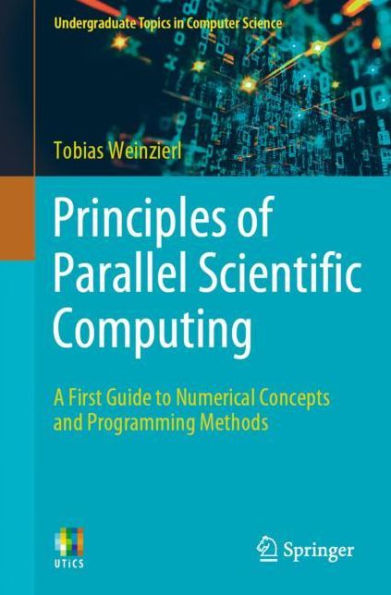The present textbook targets students which have programming skills already and do not shy away from mathematics, though they might be educated in computer science or an application domain. It introduces the basic concepts and ideas behind applied mathematics and parallel programming that we need to write numerical simulations for today’s multicore workstations. Our intention is not to dive into one particular applicationdomain or to introduce a new programming language – we lay the generic foundations for future courses and projects in the area.
The text is written in an accessible style which is easy to digest for students without years and years of mathematics education. It values clarity and intuition over formalism, and uses a simple N-body simulation setup to illustrate basic ideas that are of relevance in various different subdomains of scientific computing. Its primary goal is to make theoretical and paradigmatic ideas accessible to undergraduate students and to bring the fascination of the field across.
The present textbook targets students which have programming skills already and do not shy away from mathematics, though they might be educated in computer science or an application domain. It introduces the basic concepts and ideas behind applied mathematics and parallel programming that we need to write numerical simulations for today’s multicore workstations. Our intention is not to dive into one particular applicationdomain or to introduce a new programming language – we lay the generic foundations for future courses and projects in the area.
The text is written in an accessible style which is easy to digest for students without years and years of mathematics education. It values clarity and intuition over formalism, and uses a simple N-body simulation setup to illustrate basic ideas that are of relevance in various different subdomains of scientific computing. Its primary goal is to make theoretical and paradigmatic ideas accessible to undergraduate students and to bring the fascination of the field across.

Principles of Parallel Scientific Computing: A First Guide to Numerical Concepts and Programming Methods
314
Principles of Parallel Scientific Computing: A First Guide to Numerical Concepts and Programming Methods
314Paperback(1st ed. 2021)

Product Details
| ISBN-13: | 9783030761936 |
|---|---|
| Publisher: | Springer International Publishing |
| Publication date: | 02/09/2022 |
| Series: | Undergraduate Topics in Computer Science |
| Edition description: | 1st ed. 2021 |
| Pages: | 314 |
| Product dimensions: | 6.10(w) x 9.25(h) x (d) |
